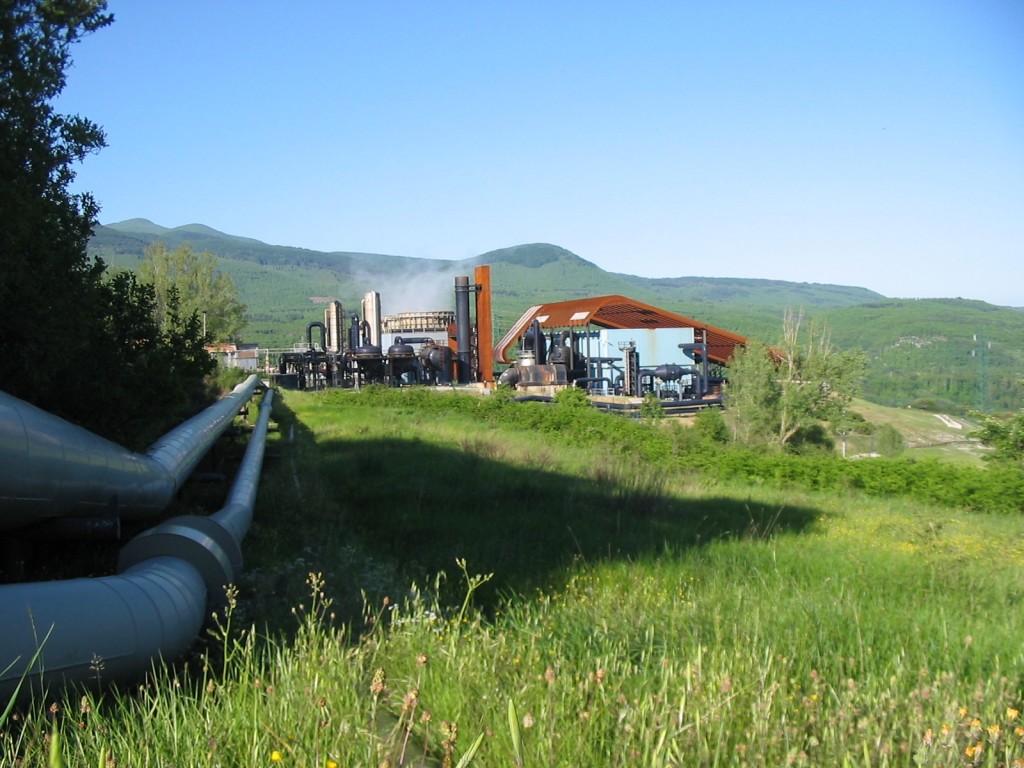Bagnore 3 geothermal plant in Italy restarts after equipment updates

Enel Green Power has restarted the 20 MW Bagnore 3 geothermal power plant in Tuscany, Italy following updates to its equipment for hydrogen sulfide abatement process called AMIS.
The 20 MW Bagnore 3 geothermal power plant by Enel Green Power in Tuscany, Italy has been restarted following some equipment updates. The plant had been temporarily shut down to work on improvements to avoid prolonged small disturbances with latest generation components added, so Green Report in Italy
“The whole machine has been replaced with new components of the latest generation which will guarantee efficiency and continuity of the service”, so Enel Green Power in a statement. The re-ignition of operations of the geothermal power plant July 17, 2020, completed on Saturday 18 July. Considering the extent of the intervention, which consisted in the total restyling of the equipment, it was necessary to do all the functional tests until the system became fully operational on Saturday 18 July.
“It is possible – the company specifies – that during the tests and the plant restarting some moments of olfactory disturbance occur, monitored and obviously well below the limits foreseen by the regulations. Enel green power, which has made an important investment in the sign of technological excellence and environmental sustainability, thanks for the collaboration the municipal administrations and the mayors of Santa Fiora and Arcidosso, with whom times and methods of intervention have been agreed “.
The plant uses a hydrogen sulfide abatement process called AMIS that is able to keep mercury and hydrogen sulphide emissions under control. The emissions are naturally present in the geothermal fluids used for energy production; hydrogen sulphide, in particular, with the characteristic smell of rotten eggs, is what otherwise characterizes the areas where geothermal emissions naturally escape from the subsoil.
From this point of view, the installation of the plant represents an important environmental protection for the geothermal territories.
“The AMIS system at the Bagnore 3 geothermal plant has been in operation since 2001 and were the first to be built on a geothermal plant, giving way to an installation path on all the plants which ended in June 2015: to date – Enel recalls – all 37 groups production of the 34 Tuscan plants are equipped with AMIS with a level of efficiency greater than 95%, thanks also to a process of maintenance and continuous innovation that has seen Enel green power make important and constant investments in the last twenty years.”
The Global Update for the geothermal power sector for WGC 2020 documented these investments, according to which in the last five years USD 263 million have been invested in Italy to improve geothermal power plants existing, in particular as regards the reduction of non-condensable gas emissions, a clear reference, this, to the AMIS.
In this regard, it is the Yearbook published last autumn by the Regional Environmental Protection Agency of Tuscany (Arpat) to confirm that 100% of the geothermal plants monitored by Arpat show values ??below the emission limit for both H2S (hydrogen sulphide or hydrogen sulphide) than for Hg (mercury) and for SO2 (sulfur dioxide or sulfur dioxide).
More specifically, AMIS is able to break down up to 99% of the hydrogen sulphide which is distributed in the gas leaving the condenser.
As regards mercury, however, the Agency adds that “the determinations of the levels of mercury exposure of the population of the area of ??Mount Amiata, due to the sum of the two contributions (natural component in the presence of a significant geological anomaly plus the emissive component of the plants) demonstrate values ??very far from the limit of health caution established by the international guidelines of 200 ng / m3 averaged on an annual basis. In the area of ??Mount Amiata there are often data comparable to the natural background levels, that is mostly between 2-4 20 ng / m3 with some peaks at 8-20 ng / m3 “, where 20 ng / m3 is the value normally measured in urban areas.
Source: GreenReport